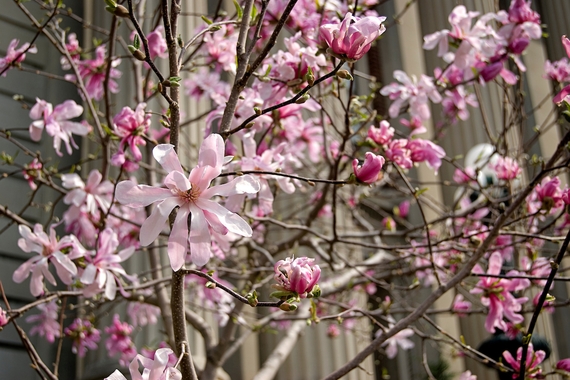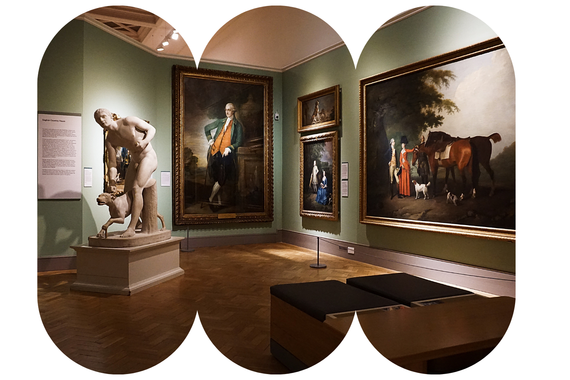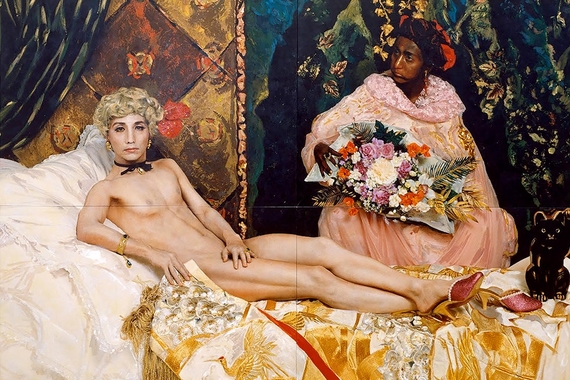Fall 2018 Art History Courses
FALL 2018 ART HISTORY COURSES
Department of Art History
338 Heller Hall
612-624-4500
Email: arthist@umn.edu
ARTH 1002W - Why Art Matters
Introduction to history of topics that investigate power/importance of art both globally and in its diverse forms, from architecture and painting to video and prints. Sacred space, propaganda, the museum, art/gender, art/authority, tourism.
ARTH 1004W - Intro to Asian Art
South, Southeast, East Asian art/material culture from Neolithic Age to twentieth century.
ARTH 1912 - Truth and Lies: Comparing Theories of the Image
What is an image? Is it what you see, or what your mind makes of it? Can an image be felt? Or heard? How is it that images produce emotions in their viewers such as fear, pity, or pleasure? If "seeing is believing" and "the camera never lies," why do some images appear truthful, while others are suspect? How do images make meaning, and how do we learn to read them? Is there a relationship between reading text and reading an image? Does reality exist prior to its representation, or is it constituted through representation? This course will examine these questions comparatively in Western and South Asian aesthetic and philosophical traditions, from Plato's "Republic" to Bharata's "Natyasastra." We will study diverse media, from painting to photography to narrative fiction, and consider how the medium of representation relates to different forms of copying, imitation, and the production of knowledge. This course will equip students not only to theorize images of the past, but to read and interpret images that we interact with in nearly every moment of our daily lives.
Note: Freshman Seminar
ARTH 1921W - Intro to Film Study
Fundamentals of film analysis and an introduction to the major theories of the cinema, presented through detailed interpretations of representative films from the international history of the cinema.
Note: Credit will not be granted if credit has been received for: CSCL 1921W
ARTH 3009 - Medieval Art
Medieval art in Western Europe, from around 1000 to the mid-14th century. Works from France, Spain, Germany, Italy, and England examined in their historical context. Cross cultural relations, development of completely new forms of art and techniques, and the processes of realization.
ARTH 3013 - Intro to East Asian Art
A selective examination of works of art produced in China, Korea and Japan from the neolithic era to modern times. Nearly every major type of object and all major styles are represented.
ARTH 3015W - Art of Islam
Architecture, painting, and other arts from Islam's origins to the 20th century. Cultural and political settings as well as themes that unify the diverse artistic styles of Islamic art will be considered.
ARTH 3182 - Egypt and Western Asia: Art and Archaeology of Ancient Egypt and Western Asia
This course will provide students with foundational knowledge in the art, architecture, and archaeology of Egypt, East Africa, Asia Minor, Mesopotamia, Iran and Central Asia from the Neolithic through Late Antiquity (ca. 7,000 B.C.E. - 650 C.E.). Students will gain an understanding of the relationship between the visual material and the social, intellectual, political, and religious contexts in which it developed and functioned. In this regard, students will also gain an understanding of the evolution of, and exchanges and differences among, the visual cultures of these time periods and regions. It will also expose them to the preconditions for contemporary geopolitics in the region.
ARTH 3335/5335 - Baroque Rome: Art and Politics in the Papal Capital
Center of baroque culture--Rome--as city of spectacle and pageantry. Urban development. Major works in painting, sculpture, and architecture. Ecclesiastical/private patrons who transformed Rome into one of the world's great capitals.
Note: Credit will not be granted if credit has been received for: ARTH 5335, HIST 3706, RELS 3612, RELS 5612
ARTH 3464 - Art Since 1945
Broad chronological overview of U.S./international art movements since 1945. Assessment of critical writings by major theoreticians (e.g., Clement Greenberg) associated with those movements. Theoretical perspective of postmodernism.
ARTH 3577 - Photo Nation: Photography in America
Development of photography, from 19th century to present. Photography as legitimate art form. Portraits/photo albums in culture. Birth of criminal justice system. Technological/market aspects. Politics of aesthetics. Women in photography. Ways in which idea of America has been shaped by photographs.
ARTH 3578 - Arts of Africa
This course explores African cinema, popular music, community theatre, street arts, comic books, graphic art, fashion, sports, and other forms of popular communication as signifiers of larger social, political, and economic processes. It examines popular cultural forms as constantly evolving expressions of social, political, and personal identities in an ever globalized and interconnected world. As a site where the tensions, frictions, collisions and notably, the productive creativities of the local and the global are circulated, negotiated and contested, African popular cultures provide insights into a unique and increasingly crucial facet of contemporary African artistic practice as critical intervention.
ARTH 3929 - Cinema Now
Course examines contemporary cinema, including fiction films, documentaries, animation, and avant-garde experiments. Focuses on feature-length theatrical films, but will also consider other aspects of the contemporary media world: graphic novels, video games, television series and the Internet (e.g., Youtube). Examines media production, distribution, marketing, exhibition, and reception. Course will also present a survey of developments in contemporary cinema studies, since the choice of films will support a variety of critical approaches including economic, aesthetic (generic, auteurist, formalist), ideological (race, class, gender), and reception studies.
ARTH 5302 - The Image Multiplied: Prints in Early Modern Europe
The technology of mechanically reproducing complex visual images on paper, a development of fifteenth-century Europe, transformed the early modern world no less than the emergence of digital media has transformed our own. Techniques of woodcut, engraving and etching quickly became important media for innovation within the fine arts. At the same time, they became equally important as sources for devotional imagery, for disseminating copies of other artworks, for the expansion of knowledge through scientific illustration, and for the effective broadcasting of political and religious messages during centuries of extraordinary political and religious upheaval. In this course we will investigate the cultural history of printed images in Europe from the time of their emergence in the fifteenth century through the mid-eighteenth century. Through lectures and class discussion, you will develop a familiarity with the technical aspects of printmaking and apply that understanding to the historical interpretation of specific works. The course will not be an exhaustive survey of printmakers and printmaking styles during the early modern era but will instead approach the early modern print through the changing cultural circumstances of its production and reception. While we will consider the work of many lesser-known (and anonymous) artists, we will concentrate on the work of major printmakers such as Mantegna, Durer, Goltzius, Rembrandt, Callot, Hogarth, and Piranesi. The course will include visits to local collections.
ARTH 5411: Gender and Sexuality in Art Since 1863
History of art from late 19th to early 21st century. How gender/sexuality have been central to that period's artistic production, art criticism, and aesthetic theorization. How gender/sexuality are important themes for artists. How the writing of history reveals assumptions about gender/sex. Critical reading/writing.
ARTH 5765 - Early Chinese Art
Art/material culture of early China from Neolithic age (ca. 10000-2000 BCE) to early imperial period (221 BCE-906 CE).
ARTH 5781 - Age of Empire: The Mughals, Safavids, & Ottomans
Artistic developments under the three most powerful Islamic empires of the 16th through 19th centuries: Ottomans of Turkey; Safavids of Iran; Mughals of India. Roles of religion and state will be considered to understand their artistic production.
ARTH 5930 - Junior/Senior Seminar: Spanish Baroque Masters
For more information about these courses or to register, please visit https://onestop.umn.edu/registration/index.html


